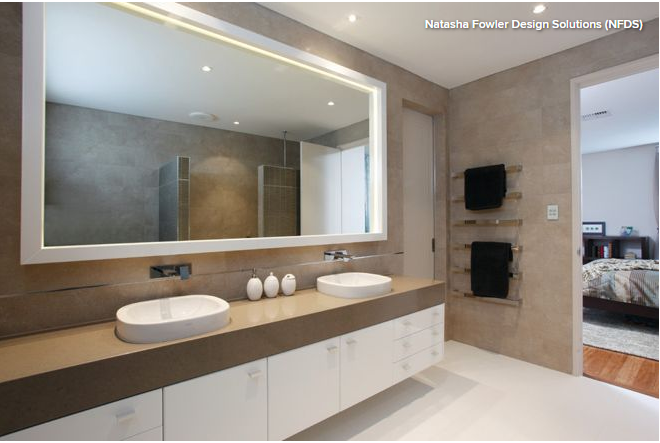How Do I… Reduce My Winter Electricity Bill?
03 August 2018
By portermathewsblog
via houzz.com.au
In this practical series, we ask experts to answer your burning home and design questions. Here, Luke Menzel, chief executive officer at the Energy Efficiency Council, shares some practical tips for keeping a lid on your winter heating consumption and costs.
 Stop heat escaping
Stop heat escaping
For most homes in colder parts of Australia, heating is by far the biggest slice of the energy bill pie. Insufficient insulation and draughty homes mean that heaters have to work much harder to keep you warm, which adds to power costs.
Draught-proofing your home to prevent heat escaping is one of the simplest and most cost-effective ways to save energy, allowing you to stay warm and toasty without cranking up the thermostat.

Turn the thermostat down
Turning the thermostat too high can be a huge drain on energy and your finances, with each degree adding around 10 per cent to your heating bill. For maximum efficiency, aim to set it between 18 and 20°C. If this feels too chilly (most of us prefer a more comfortable 25 or 26°C in winter), try moving away from uncovered windows, sealing draughts and popping on a jumper.

Rug up
Having too many cold surfaces in your home can add to the chill factor too – in fact, it can have just as much of an effect as air temperature.
To make your home feel warmer, consider installing secondary glazing and adding heavy curtains to windows, laying rugs on cold, hard floors, and moving your favourite armchair so it’s not right beside a cold window.
Open curtains during the day to allow the winter sun to warm the surfaces in your home. Draw curtains at night to keep the heat in.

Only heat the rooms you’re using
Rather than heating your entire home, zone your heating so it only warms up those rooms you spend time in. Do this by closing doors to keep the heat where you need it. If you’re installing a new heating system, consider a ducted system that can be zoned for individual rooms.
Tip: Check ducting before the start of winter to check that it’s leak-free, well-insulated and in proper working condition. This can sometimes be done with thermal imaging cameras, to save crawling around in dark spaces.
 Reconsider halogens
Reconsider halogens
Halogen downlights can be a huge energy waster in winter. Aside from their high energy consumption, these lights need to be kept far away from insulation as a fire-safety precaution. This means there is an uninsulated patch of ceiling surrounding halogen downlights that provides an easy escape route for heat.
The heat that rises from each downlight can also create a chimney effect and suck warm air out of your house, which leads to chilly draughts.
 Replace old appliances
Replace old appliances
That old, second fridge in the garage or dated reverse-cycle air conditioner in the living room could be costing you more than you realise. Consider the numbers; a new, energy-efficient fridge can cost half as much to run as one that’s 15 to 20 years old – this equates to a saving of about $150 per year. Meanwhile, most reverse-cycle heating/cooling systems are between 30 and 40 per cent more efficient than those of 15 years ago.
Splashing out on new energy-efficient appliances can cut your energy costs considerably.
 Be star savvy
Be star savvy
Most major appliances, such as fridges and reverse-cycle heating/cooling systems, come labelled with an energy-star rating, which tells you how efficient they are and how much energy they’ll consume. It ranges from one to six stars (although in recent years, four additional high-performance stars have been added to many products). The more stars, the more efficient the product. Appliances with more stars may cost a little more, but you’ll save the money back in running costs.
Be aware that if you have an older appliance at home with a three-star label, it might only rate as two stars by today’s standards – and may not even be allowed to be sold under current minimum standard rules.
The number below the stars on the label is a calculation of how much electricity the appliance will typically consume in a year. Multiply this number by your electricity tariff to get annual running costs.
Tip: Tariffs can differ significantly at different times of day, so choosing when to use your appliance can help save you money. You might find it more cost efficient to run your washer, dryer or dishwasher at night or early in the morning.
 Reduce pump time
Reduce pump time
If you have a swimming pool, halving the pump-timer duration in winter can result in substantial savings. However, do check with your local pool or spa specialist to ensure you maximise energy efficiency while still meeting all the health requirements required with a pool.

Tell us
What’s your winter energy-saving tip? Tell us in the Comments section below. And don’t forget to like this story, share it and save the photos. Join the conversation.
Comments (0)